A Professional’s Guide for Independent Contractors on How to Survive the 2018 Tax Season
It’s every independent contractor’s least-favorite time of the year: tax season. No one likes doing their taxes, but when yours involve complicated deductions or payments from a variety of sources, your annual filing becomes a complicated labyrinth of assets, deductions and expenses.
Luckily, the same digital tools that make it possible to run your business remotely also allow you to track your expenses and invoices with ease. In particular, there is a variety of accounting tools and professional tax software that can help you wade through last year’s expenses and deposits and identify deductions you might have otherwise missed.
Below, we’ll introduce you to the bookkeeping, invoicing and professional tax software TrustRadius users love—and offer a few tips for making it through the 2018 tax season unscathed.
The Accounting Software You Need to Survive
The right piece of accounting software takes the headache out of small business administration. Many of these tools have invoicing features, allowing you to easily create professional-looking documents without formatting problems and other issues. Most will link directly to your bank account to track your earnings and outstanding invoices, while also allowing you to easily categorize expenses and spending. Some applications even give you the ability to accept a variety of payment formats, including credit cards.
These are the tools TrustRadius users love; all of them are rated over an 8.0 over 10 on our Accounting, Tax and Budgeting Software TrustMap. All the applications below are appropriate for use by self-employed contractors, and many are designed specifically for this market segment. They’re all easy-to-use regardless of the user’s accounting background and present simple but comprehensive reporting and invoicing features.
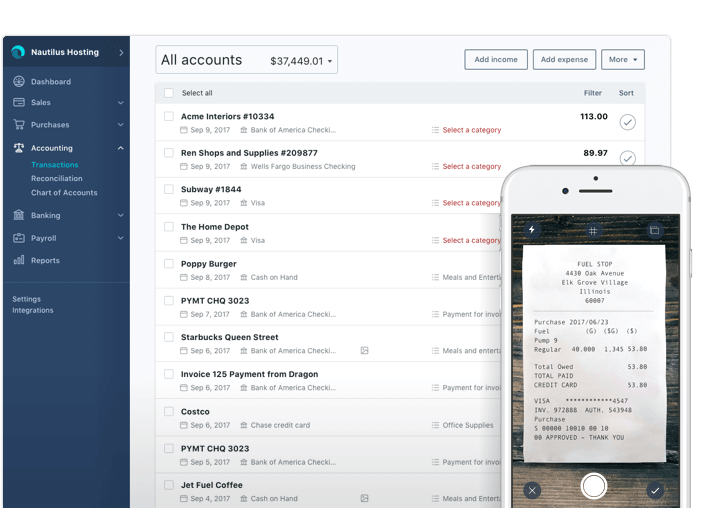
Accounting by Wave
TR Score: 8.7 out of 10
Wave is a favorite invoicing, payment processing and bookkeeping application for freelancers and small business owners. On the payment side, this tool allows self-employed professionals to create customized invoices for multiple businesses and accept credit card payments and import expenses directly to a linked bank account. TrustRadius users also like that you can create estimates and convert them into invoices after work concludes.
As for deductions, Wave can track expenses and bills. In fact, you can even upload new receipts by snapping a photo with your smartphone—the application is cloud-based, so you can use it with your mobile devices.
TrustRadius reviewers also praise its bookkeeping abilities. Wave tracks sales tax and balances and comes with several standard reports, as well as the ability to create custom reports. However, some users say the reporting feature is not as robust as they would like—for instance, there are no preset date settings on many standard reports. Additionally, TrustRadius reviewers say the bank reconciliation module could use some work; it’s not as intuitive as they would like.
All in all, it’s a fairly robust service, especially considering that it’s available for free, which makes it very attractive indeed for many fledgling contractors.
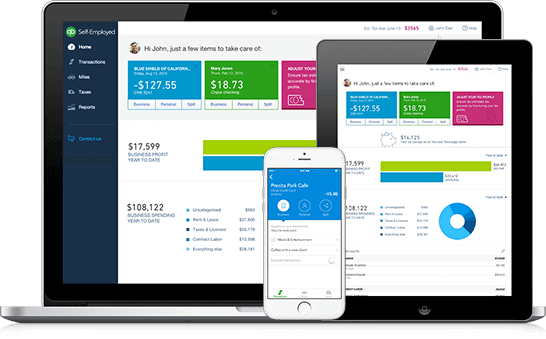
QuickBooks Self-Employed
TR Rating: 8.4 out of 10
As one of the most popular accounting tools available, Quickbooks is understandably the standard against which all other similar applications are compared. The Self-Employed module is geared specifically to independent contractors and small-business owners who need assistance tracking and analyzing expenses and filing their taxes. The TurboTax bundle integrates directly with the popular tax software for a self-guided way to prepare, report, and pay self-employed taxes.
Cloud-based Quickbooks Self-Employed can be linked directly with a business or personal bank account to categorize and track expenses and incoming deposits. Other notable features include the ability to add receipts with a picture taken with a smartphone camera, and automatic mileage tracking through mobile devices.
TrustRadius reviewers praise the tool’s expense tracking and reconciliation features. However, if you’re looking for a high-level accounting software, this module may not do everything you need it to. One reviewer comments that some typical accounting features are not available in QuickBooks Self-Employed, such as integration with popular e-commerce tools, project and time tracking, and the ability to create recurring transactions. Another reviewer says that he would love to see integrations with TripIt and Expensify.
Overall, it’s a well-regarded program for basic invoice management and expense tracking. Contractors are charged a monthly fee to use the product, but many users say it’s worth it for the cost savings since they don’t have to hire an accountant.
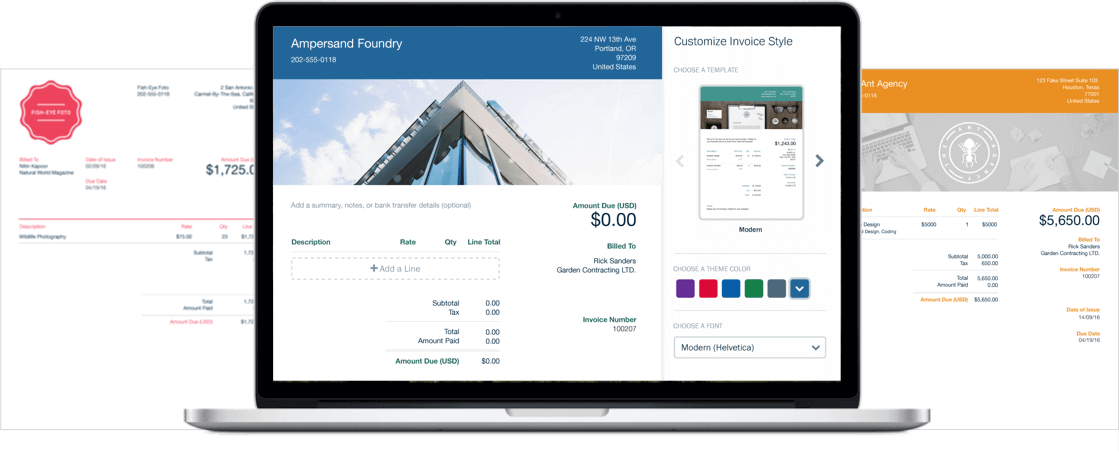
FreshBooks
TR Rating: 8.2 out of 10
Freshbooks actually originated as an invoicing tool for independent contractors, although it’s now also popular with mid-sized and enterprise businesses as well. Valuable tools for contractors include productivity features like time tracking, which allows you to break out time by the client and to convert tracked hours directly to invoices.
Freshbooks also gives small businesses and self-employed workers the ability to accept payments using credit cards. However, some TrustRadius users comment that this feature could use some work, since the application doesn’t appear to accept certain cards. Additionally, there are associated fees for credit card processing.
The automation features also pose a problem for some TrustRadius reviewers, since they’re not as customizable as they’d like. For instance, users like the automatic late fees feature but wish that it was flexible enough for end users to choose when additional late fees were applied.
Again, it’s a good basic tool for professional contractors who want to move from manual spreadsheets to branded invoices. And with additional payment options, expense tracking and bank account reconciliation, it’s a fairly extensive accounting program.
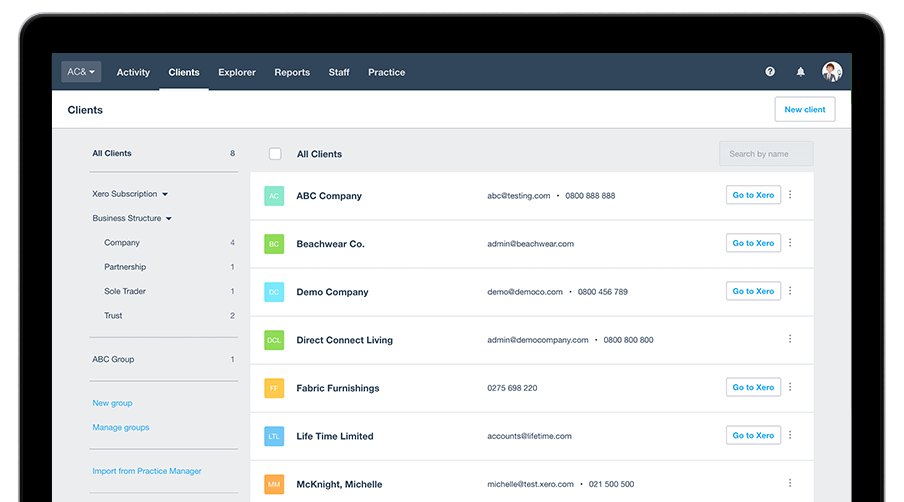
Xero
TR Rating: 8.7 out of 10
Xero is a tax-focused accounting and bookkeeping application for small businesses. The Xero +C version is designed specifically for SMB owners who contract a lot of tasks to self-employed freelancers (also known as Schedule C employees, hence the “+ C”).
Like many similar products, it links to your business bank account to help users import expenses and categorize data—you can even create bank rules to automate expense management. But like other accounting tools out there, more robust customizable reporting definitely makes it onto TrustRadius users’ wishlists for this program.
One of Xero’s major strengths seems to be its application integration. The software integrates with a huge number of relevant apps, including e-commerce tools like Shopify, payroll tools like ADP, and inventory apps like VendHQ.com. TrustRadius users also praise the app’s mobile version, saying that they can access their data online—and through multiple user accounts—quickly and easily. And that’s certainly advantageous for small business owners.
Professional Tax Software for Budget-Conscious Contractors
If you’re not planning on hiring an accountant or CPA to prepare your taxes for you, you’ll have to do it yourself. Self-filing can save you a couple hundred dollars a year, making it attractive for business owners who are trying to cut costs. But it also means you’ll have a pretty big job in front of you, especially if you have a backlog of payments and expenses to wade through.
Your best bet is to use one of the accounting tools above to calculate and categorize your earnings and expenses, then choose a professional tax software to report your income and deductions and file with the IRS. Below, you’ll find a list of some of the more popular tools used to handle the tax filing side of the equation. These are the products that are most frequently recommended when you search for professional tax software for self-employed contractors. Furthermore, these tools all have special features that make it easier for self-employed professionals and business owners to file.
TurboTax Self-Employed
TurboTax is far and away the most frequently-used program for self-filing. The self-guided questionnaire format makes complicated tax rules fairly easy to understand. But if you do have questions, the online software comes with a huge knowledge base, or you can call support directly (although you may be on hold for a while if you call close to April 15). It also integrates directly with QuickBooks Self-Employed, so if you’ve chosen to use that as your bookkeeping tool, you may find it relatively easy to import earnings and expenses, although you’ll likely have to do some reconciliation to make sure everything is correctly categorized. The major drawback is the upcharges: TurboTax requires that users pay extra for audit protection and other premium services.
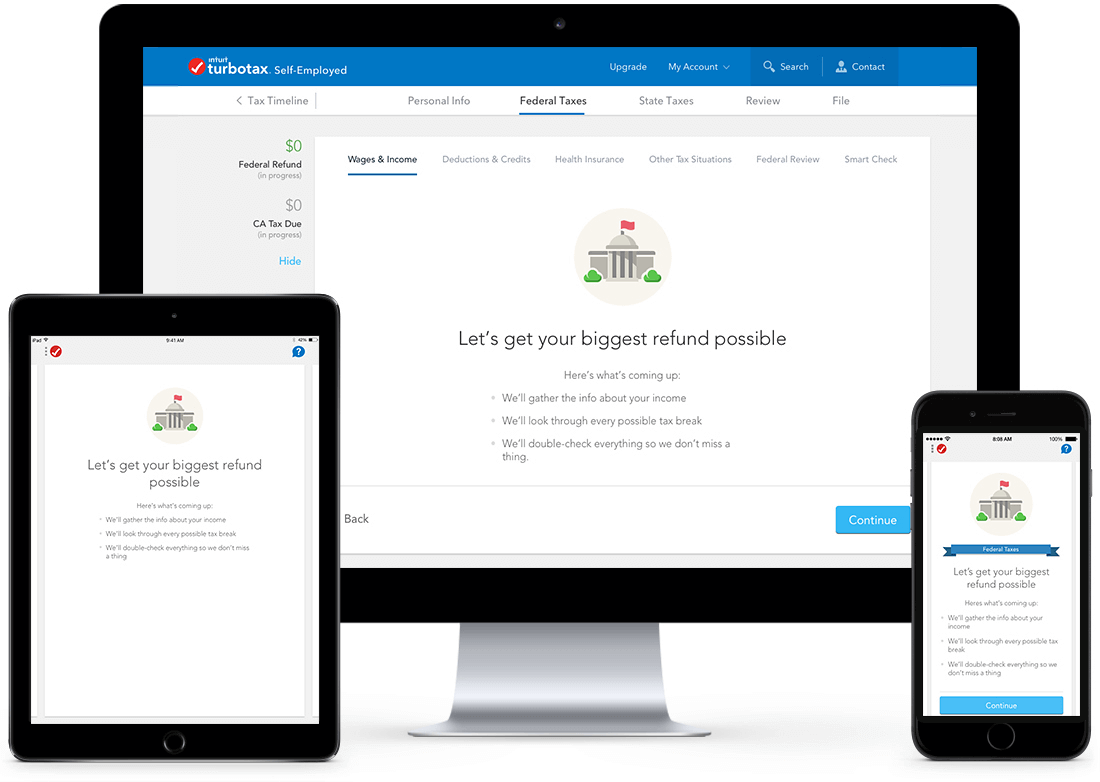
H&R Block Premium
The brick-and-mortar tax assistance group now has an online application that self-guided users can access to file taxes on their own. The major advantage to the H&R Block tool is that you have the ability to tap into a tax professional at a local H&R Block location if you have questions while you file—but of course, that extra assistance comes at additional cost. The tool also offers audit support for an additional fee, although you can save money if you bundle both products at once. And some sites say that the online portal can be difficult to navigate, which is a turnoff for some users.
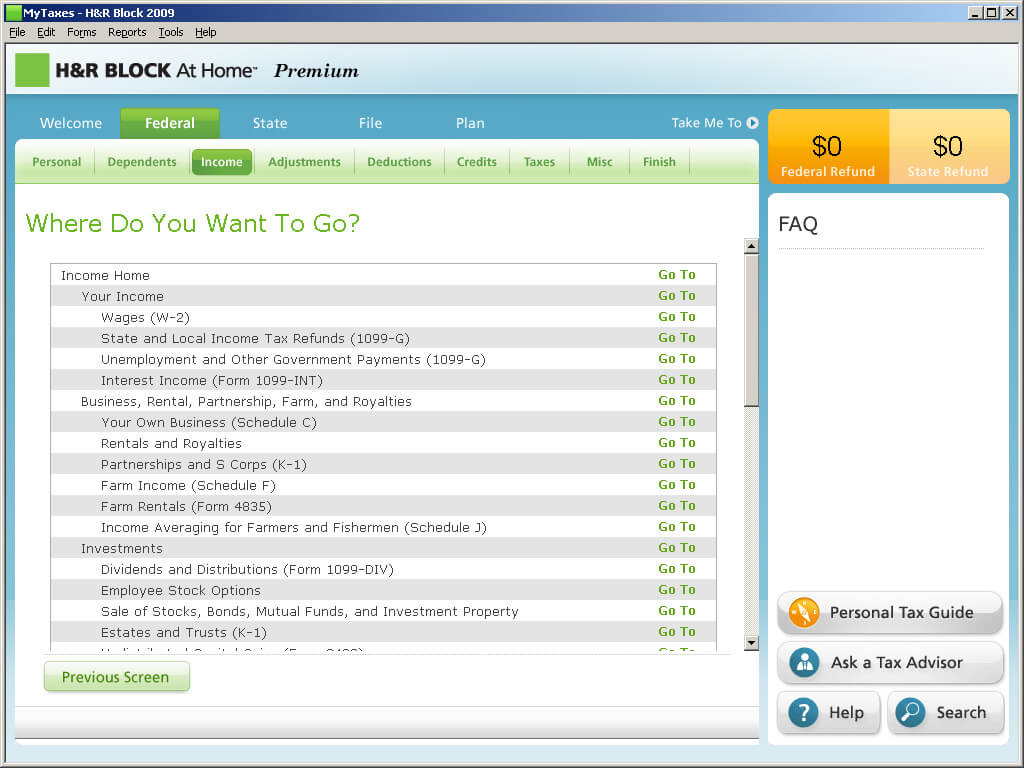
TaxACT
The major advantage of this professional tax software is the price point: it’s just $59.95 for freelancers. For that price, you’ll get most of the features you expect to find in more expensive tax products, making it one of the better values out there. The downside is support: it’s fairly minimal, mostly consisting of an FAQ page on the TaxACT site. There is an email address that you can ping with additional questions, but that may not be as immediate as online or phone support. There’s also no direct 1099 import, so you’ll have to enter those earnings manually yourself. But still, if price is a concern, then this product certainly fits the bill.
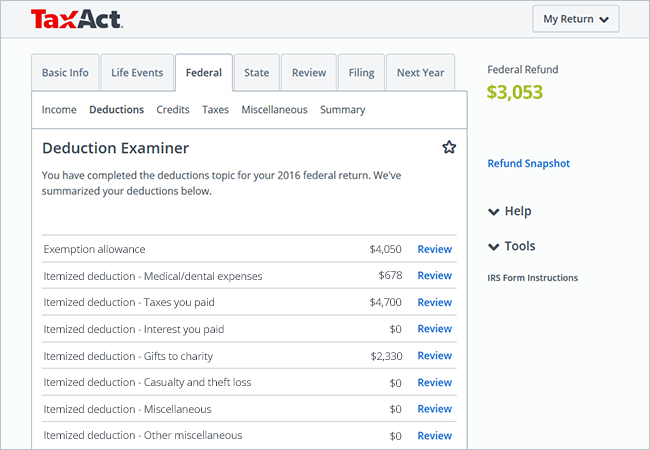
A Few Other Tips to Get You Through Tax Season
Of course, there’s more to tax preparation than which professional tax software you use. You’ll also need to know a little bit about what to expect during the process, especially if this is your first time filing as a small business owner or self-employed freelancer. Here are some pointers to bear in mind as you work through your taxes.
- You May Not Receive a 1099 for Every Client. No 1099? Read this before you start tearing your hair out. Technically, any business you work for should be sending you a 1099-MISC form for reporting your earnings at the end of the year if they pay you over $600. So you may not get one from every client. If a client pays you less than $600 throughout the year, they’re off the hook, and you’ll have to calculate your earnings yourself. Additionally, some businesses or individuals don’t know about the 1099 requirement and don’t send them out (of course, they’re playing with fire, but that’s neither here nor there). For your purposes, however, you can go without a 1099. Contractors are not technically required to attach a 1099 when they file. So if you haven’t received one, you can figure out your earnings yourself and add them without an official form.[vcex_spacing size=”30px”]
- Keep Track of Your Deductions. The risk of audit is real when you work for yourself. Deductions can save you a bundle on annual or quarterly taxes, but you definitely don’t want to exaggerate the amounts. The IRS keeps a watchful eye on self-employed business owners, looking for this kind of fraud. So your best bet is to keep track of your receipts and make sure you have written or digital proof to back up any deduction you take. (The bookkeeping and accounting software listed above can help you with that in the future).[vcex_spacing size=”30px”]
- Be Warned: If You Haven’t Been Paying Estimated Taxes, You May Be Penalized. Most new contractors assume they can prepare and pay annual taxes on April 15 just like anyone else. But the IRS expects contractors to pay estimated taxes ahead of time throughout the year if they think they’ll owe more than $1,000 total. That means making quarterly payments on your estimated tax liability. But if you’re reading this article, chances are good that you haven’t been paying quarterly. In that case, you should just pay your taxes as soon as possible to avoid additional penalties—or talk to a professional CPA or tax advisor about whether you need to start making estimated tax payments in the future.[vcex_spacing size=”30px”]
- Make the Time for Accounting. Every contractor tells themselves this will be the year they’ll keep up with their expenses and payments—but it’s easy to let it get away from you when you’re busy trying to earn a living. If you’ve let your bookkeeping slide in the past year, you’ll need some extra time to calculate your expenses and track down those incoming checks. Make sure to set aside other commitments and projects so you can focus on your accounting. If you rely on a CPA or other tax professional, you may not have to do the math yourself, but you’ll still need to have this paperwork in order before your tax preparer can start.[vcex_spacing size=”30px”]
- If You Can’t Pay Now, You Have Options. Many new contractors are surprised when they complete their taxes at the end of the year and owe several thousand dollars. It’s a rookie mistake, but it happens to the best of us—especially since most of us are used to an employer withholding taxes from our paycheck. However, if you haven’t been making quarterly payments—or saving a part of your earnings—don’t panic. The IRS allows most taxpayers in good standing to enroll in a payment plan to pay off their outstanding tax liability. It’s not the ideal choice since you’ll have to pay interest on the money you owe, but it’s a last-ditch way to keep yourself above board while you save money to pay off your taxes. Visit the IRS Payment Plans page to learn more.[vcex_spacing size=”30px”]
- Take a Few Deep Breaths. Preparing your taxes can be stressful (understatement of the year, we know). Although you shouldn’t put them off any longer, make sure you’re not whipping yourself into a frenzy trying to get everything together. After all, it will only make the job harder. So if you start to feel yourself getting overwhelmed, take a few deep breaths, stand up and stretch. It sounds simple, but it’s amazing what a difference it makes. And don’t worry—you’ve got this!
Was this helpful?